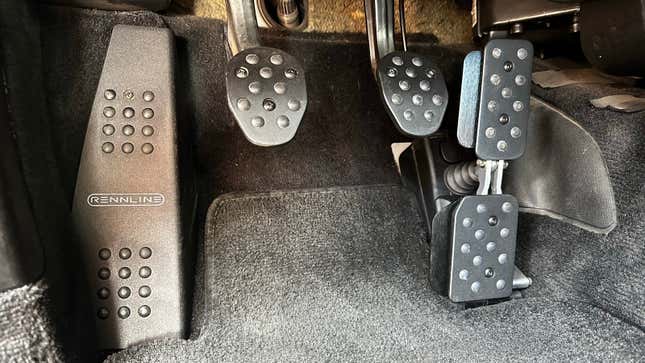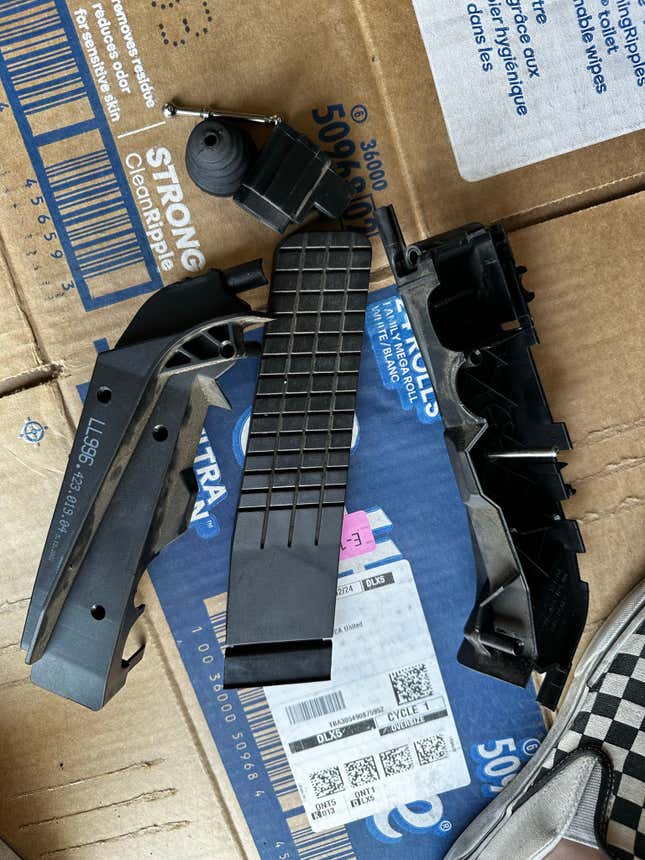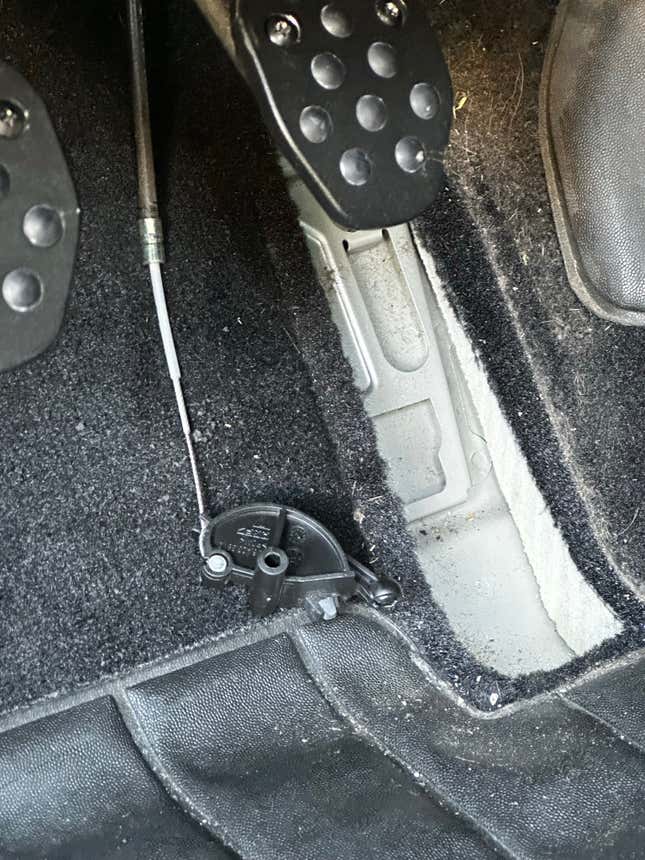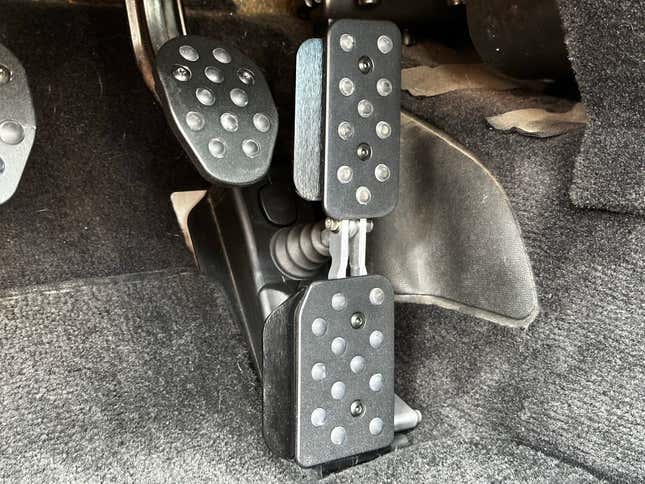
Some modifications you make to your car because they’ll make it faster or handle better. Some you do because it will make it look cooler. Some you do because the stock part is worn out, and it’s the same money to replace it with a performance part. Others, like the Rennline racing pedal set I installed this past weekend on Project 996, you do just for the hell of it.
My 911, as I’ve mentioned previously, has a lot of miles on it. I’m sitting at around 141,000 miles as I write this, and while generally, the car is in awesome shape, not everything is as tight as a 911 should be. So, when Rennline offered to send me their four-piece pedal set to check out, I thought, what the hell, how bad could it be to install, and even if it only looks cool, it’ll be worth doing.
I was wrong. Kind of. So, first of all, the pedals look rad as hell. The black aluminum dead, clutch and brake pedals are really subtle but give strong race car energy when I go to get in the car. They provide no extra function over the stock rubber pedal pads, but looking and feeling cool is worth something. They go on easy, except for some minor drilling on the plastic clutch pedal and steel brake pedal. Though, things go a little off the rails when you get to the throttle pedal.

The Rennline adjustable throttle pedal is a really nice piece. It’s all milled aluminum and replaces all of the plastic stuff from the stock throttle pedal with metal, the pivots get bearings and the throttle cable end becomes a heim joint. It’s really stout. It looks awesome, too, and it seems worth the $379 that Rennline asks for it. All that said, it’s a real sonofabitch to install.
The problems with installing the throttle pedal start with all the modifications you need to do to your stock plastic throttle pedal assembly. The full-color instructions Rennline includes with the pedal are more or less clear or would be if they weren’t xeroxed to death, with the bottom quarter of the page unreadable.
The modification itself is really just trimming some plastic flanges to make room for the new pedal and the bracket that anchors it on the side. I used a Dremel tool to cut and sand the plastic down, and it came out looking pretty good. There’s also a little drilling on the car’s pedal mounting pedestal and some minor cutting of carpet, but nothing too terrifying.

The next issue is part tolerances. Unlike you’d typically expect, where stacked tolerances make things looser than they should be, this throttle pedal has the opposite problem. It’s so closely machined that I had to clearance parts slightly so they’d fit and move smoothly. The biggest example of this is with the new aluminum backplate that the plastic pedal assembly and Rennline pedal assembly all bolt to, which is, in turn, bolted to the car’s floor. I had to spend hours carefully trimming a slip joint that holds the plastic pedal assembly down so that it would just barely squeeze in and allow me to fit a screw that sandwiches things together.
Sure, the too-tight thing is better than the too-loose thing, but Rennline, toss an extra thou or two in the CNC file for these babies to make the install less onerous. The same happens with the heim joint connecting the throttle cable to the throttle pedal. I had to aggressively pry an aluminum slot open to get it to barely slip in so I could screw it together and marred the metal in the process. Will anyone see it? No. Will I know it’s there and be annoyed by it for months? Yep.

In total, I have around eight hours (in my garage in 95-degree heat) into installing all four pedals, and after all of that, can I notice a difference in how it feels to drive with the new stuff? Not really. But I will concede that there’s a lot of adjustment in the throttle pedal, and I have just started tweaking it and getting used to it, so I’m not calling that judgment final.
(Update: I have the gas pedal pretty well dialed after a couple of weeks of driving and I really like the way it feels. It was still a hell of a lot of work, though.)
At the beginning of this thing, I talked about the different reasons people have for modifying their cars. After flippantly deciding to change my stock pedals out for the Rennline units, I’ll add another reason — hubris.
In all seriousness, though, these look rad; they’ll likely never fail due to age or use, and I’ll probably find a sweet spot on the throttle pedal at some point that feels better than stock. I appreciate Rennline for sending these over and letting me check them out. I also feel duty-bound to mention that the company offers a much less adjustable version that looks almost as cool and seems considerably easier (and cheaper) to deal with. Check them out.
